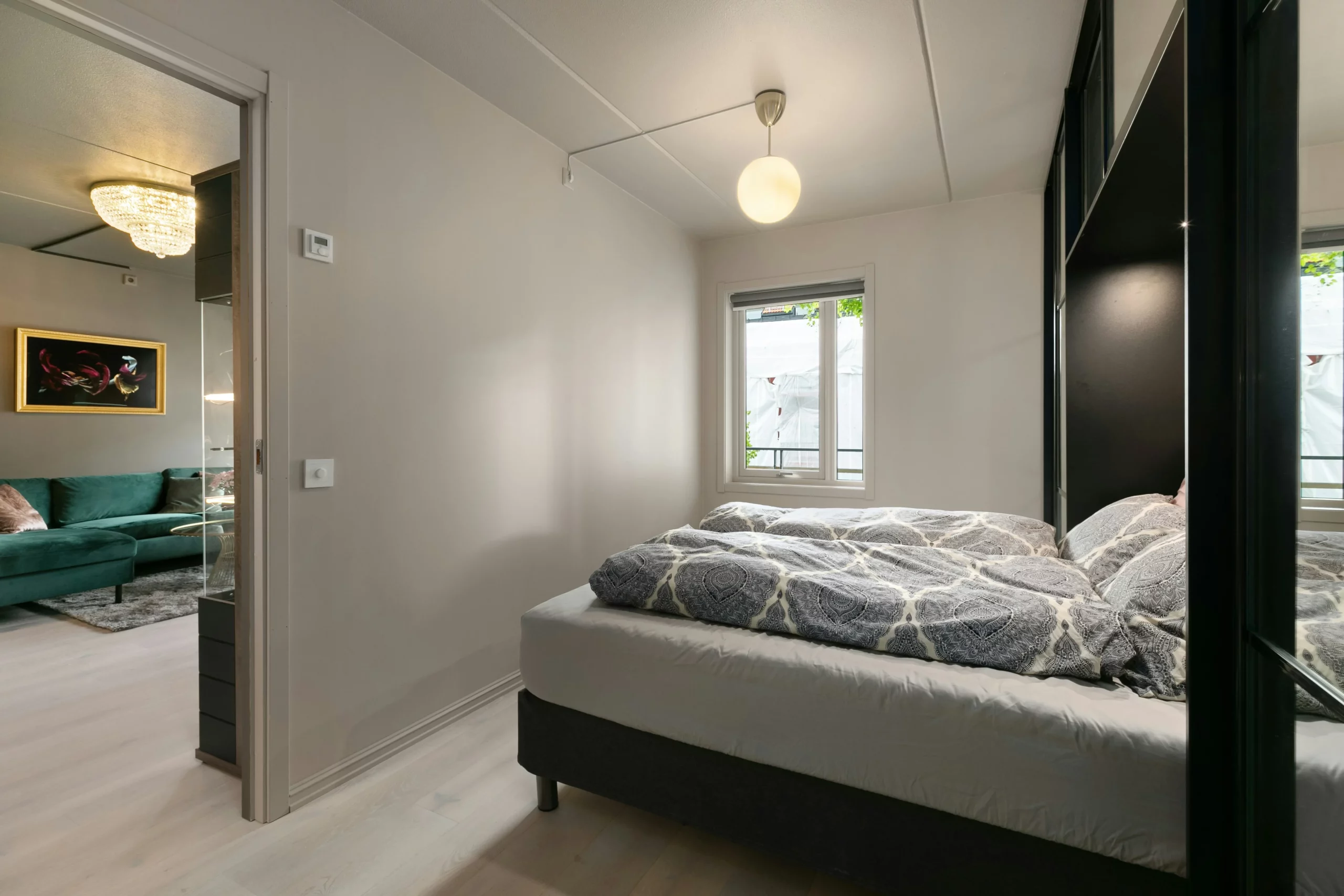If you’re on the hunt for a two-bedroom flat in London this year, brace yourself—it’s not going to be easy. The market in 2025 is quick, competitive, and pricey. Two-beds are the new gold dust. With so many people working from home, that second room has become more than just “extra space.” For some, it’s a home office. For others, it’s a much-needed escape from living on top of their partner or flatmate. Either way, these flats rarely stay on the market for long—sometimes just a matter of days.
Why are two-beds so popular? They hit that sweet spot. Young families want the space, professional sharers split the rent, and couples see it as a step up from a cramped one-bedroom. But of course, the challenge is always the same: finding the right mix of price, location, and liveable space.
What You’ll Get in a London 2-Bedroom Flat
Most two-beds in London sit somewhere between 600 and 850 square feet. That’s enough for a decent-sized living room, two proper bedrooms, and a bathroom or two. Step into the newer developments—places like Canary Wharf or Battersea Power Station—and you’ll find flats pushing past 900 square feet. These come with all the bells and whistles: open-plan kitchens, sleek wooden floors, fitted wardrobes, and finishes that feel shiny and modern.
Furnishing varies depending on where you’re looking. In central London—Zones 1 to 3—about two-thirds of flats are furnished or at least part-furnished. That makes sense for people who move around often or don’t want to deal with buying furniture. Head further out to areas like Croydon, Barking, or Dagenham, and you’ll find more unfurnished places—perfect for families or long-term renters who want to put their own stamp on the home.
One big shift in 2025? Energy efficiency. More than 70% of rental flats now carry an EPC rating of B or higher, thanks to stricter rules. It’s not just a tick-box exercise—it means lower bills and warmer winters for tenants.
The Extras You’ll See
Depending on the building, you might also come across:
- Balconies or Juliet windows (common in around 40% of new builds)
- Secure entry and lifts in taller blocks
- Communal gardens or rooftop terraces for that bit of shared outdoor space
- Smart-home touches like app-controlled heating, especially in Zones 1–2
But London isn’t just about shiny towers. Older Victorian and Edwardian conversions are still hugely popular. High ceilings, bay windows, and period charm pull people in—but they often come with quirks: draughts, single glazing, or plumbing that sometimes has a mind of its own.
Best Areas for 2-Bedroom Flats in London
Everyone’s looking for something different: some want to save money, others want nightlife, and families need space and schools. Here are the top picks for each type of renter.
1. Budget Renters
Where to look: Barking & Dagenham, Waltham Forest, Redbridge
These boroughs still offer the cheapest two-beds, averaging £1,350–£1,600/month. Barking has a crop of new flats with EPC-B ratings and balconies. Waltham Forest remains a solid option for anyone on a tighter budget.
Waltham Forest is one of London’s five cheapest boroughs in 2025, with build-to-rent flats growing by 20% (RentLondonFlat.com).
2. Young Professionals & Flat Sharers
Where to look: Stratford (East Village), Hackney, Camden, Canada Water
If you want nightlife, gyms, cafés, and quick transport, these are your areas. Stratford’s East Village offers spacious new-builds from around £1,950/month. Hackney and Camden have a lively cultural scene—perfect for sharers splitting rent.
In Hackney, more than 60% of new tenancies in 2025 were shared lets (Zoopla Q1 2025).
3. Small Families
Where to look: Lewisham, Ealing, Greenwich, Southgate
For families, space and schools come first. Greenwich and Ealing are strong choices: more room, green parks, and primary schools within walking distance. Many two-beds here come with gardens or balconies too.
Family-focused rentals in Greenwich rose 9% in 2025, with average two-beds at £1,875/month.
4. Luxury Renters
Where to look: Knightsbridge, Chelsea, Hampstead, Shard Place (London Bridge)
If budget isn’t an issue, London’s luxury rentals have plenty to offer: concierge services, skyline views, and high-end interiors. At Shard Place, two-beds start at £1,340 a week (~£5,800/month).
Prime Central London two-bed rents rose 6.2% year-on-year in 2025 (JLL Prime Rental Index 2025).
5. Remote Workers
Where to look: Clapham, Balham, Canary Wharf, Finsbury Park
Working from home? These areas are popular for their quiet streets, good cafés, and fast internet. Flats often come with study corners or broadband packages. Canary Wharf, in particular, has seen more demand for work-from-home features.
Zoopla reports a 22% increase in Canary Wharf renters requesting dedicated workspaces in 2025.
The Costs You’ll Need to Budget For
The monthly rent is just the start. Here’s what else to expect:
- Council Tax: £100–£250/month depending on borough
- Utilities: £150–£250/month (less in EPC-B rated homes)
- Internet & TV: £30–£60/month
- Security Deposit: Up to 5 weeks’ rent (£2,000–£2,800)
- Holding Deposit: 1 week’s rent to secure the flat
- Insurance: Around £10–£20/month for contents cover
- Parking: £50–£250/month, especially central or gated developments
- Service Charges: For gyms, lifts, cleaning, concierge (in luxury flats)
- Other admin fees: Late payments, new keys, or tenancy changes (£25–£150)
How to Actually Get a Flat in London
- Know your budget: Average two-beds cost £1,600–£2,500/month. Factor in tax, bills, and deposits.
- Choose your area carefully: Outer boroughs are cheaper, but central zones save you time on commuting. Stratford and Lewisham are especially popular in 2025.
- Stick to trusted portals: Rightmove, Zoopla, and OpenRent cover most listings. Be wary—rental scams are on the rise (Action Fraud UK).
- Have documents ready: Landlords usually want ID, payslips, proof of income, and sometimes a guarantor. Being organised makes a big difference.
- View smartly: Check water pressure, EPC rating, insulation, and damp. Bad energy ratings can add £40–£80/month to bills.
- Look beyond rent: A £2,000/month flat could really cost £2,400–£2,600 with extras included.
- Move fast—but stay safe: Flats in Zones 1–3 let in just 13 days on average. Don’t delay, but don’t transfer money until you’ve checked the landlord.
- Check your tenancy agreement: Deposits must go into a government-backed scheme (DPS, TDS, or MyDeposits). Ask for proof.
- Do an inventory: Take photos or videos before moving in—it’ll protect your deposit later.
Conclusion
The London rental market in 2025 is fast and competitive, but it’s not impossible. If you know your budget, pick the right area, and get your paperwork ready, you’ll have a much better chance of landing a good two-bed before it disappears.
From affordable spots in Barking to high-end apartments in Knightsbridge, there’s something for everyone—if you move quickly and keep an eye on the hidden costs.
























